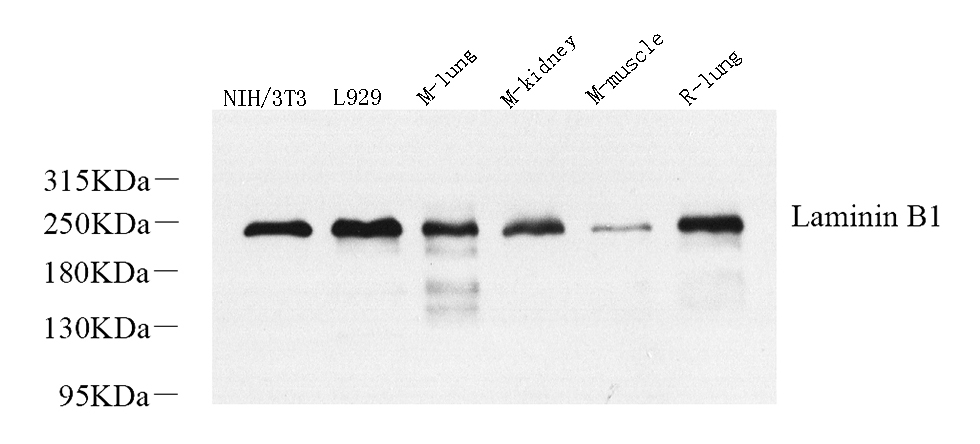Laminin beta1 Polyclonal Antibody
For reference only. Please follow the manual included in your kit for instructions.
Catalog Number
RD70525A
Product Name
Laminin beta1 Polyclonal Antibody
Catalog Number
RD70525A
Clonality
Polyclonal
Purification Method
Affinity purification
Isotype
IgG
Host
Rabbit
Background
Laminins, a family of extracellular matrix glycoproteins, are the major noncollagenous constituent of basement membranes. They have been implicated in a wide variety of biological processes including cell adhesion, differentiation, migration, signaling, neurite outgrowth and metastasis. Laminins are composed of 3 non identical chains: laminin alpha, beta and gamma (formerly A, B1, and B2, respectively) and they form a cruciform structure consisting of 3 short arms, each formed by a different chain, and a long arm composed of all 3 chains. Each laminin chain is a multidomain protein encoded by a distinct gene. Several isoforms of each chain have been described. This gene encodes the beta chain isoform laminin, beta 1. The beta 1 chain has 7 structurally distinct domains which it shares with other beta chain isomers. The C-terminal helical region containing domains I and II are separated by domain alpha, domains III and V contain several EGF-like repeats, and domains IV and VI have a globular conformation. Laminin, beta 1 is expressed in most tissues that produce basement membranes, and is one of the 3 chains constituting laminin 1, the first laminin isolated from Engelbreth-Holm-Swarm (EHS) tumor. A sequence in the beta 1 chain that is involved in cell attachment, chemotaxis, and binding to the laminin receptor was identified and shown to have the capacity to inhibit metastasis.
Immunogen Information
Immunogen
Recombinant protein corresponding to Mouse Laminin β1
Swissprot
P07942,P02469
Synonyms
CLMCutis laxa with marfanoid phenotypeLAM B1LAMB 1LAMB1LAMB1Laminin B1Laminin B1 chainLaminin beta 1 chainLaminin beta 1 chain precursorLaminin beta1Laminin subunit beta 1Laminin subunit beta-1Laminin-1 subunit betaLaminin-10 subunit betaLa
Calculated MW
198 kDa
Observed MW
220 kDa
Applications
Reactivity
Mouse,Rat
Tested Applications
WB
Conjugation
Unconjugated
Dilution
WB 1:500-1:2000
Concentration
1.2 mg/mL
Storage Buffer
PBS with 0.02% sodium azide, 1% BSA and 50% glycerol, pH7.4
Storage Instructions
Store at -20°C. Avoid freeze / thaw cycles.
